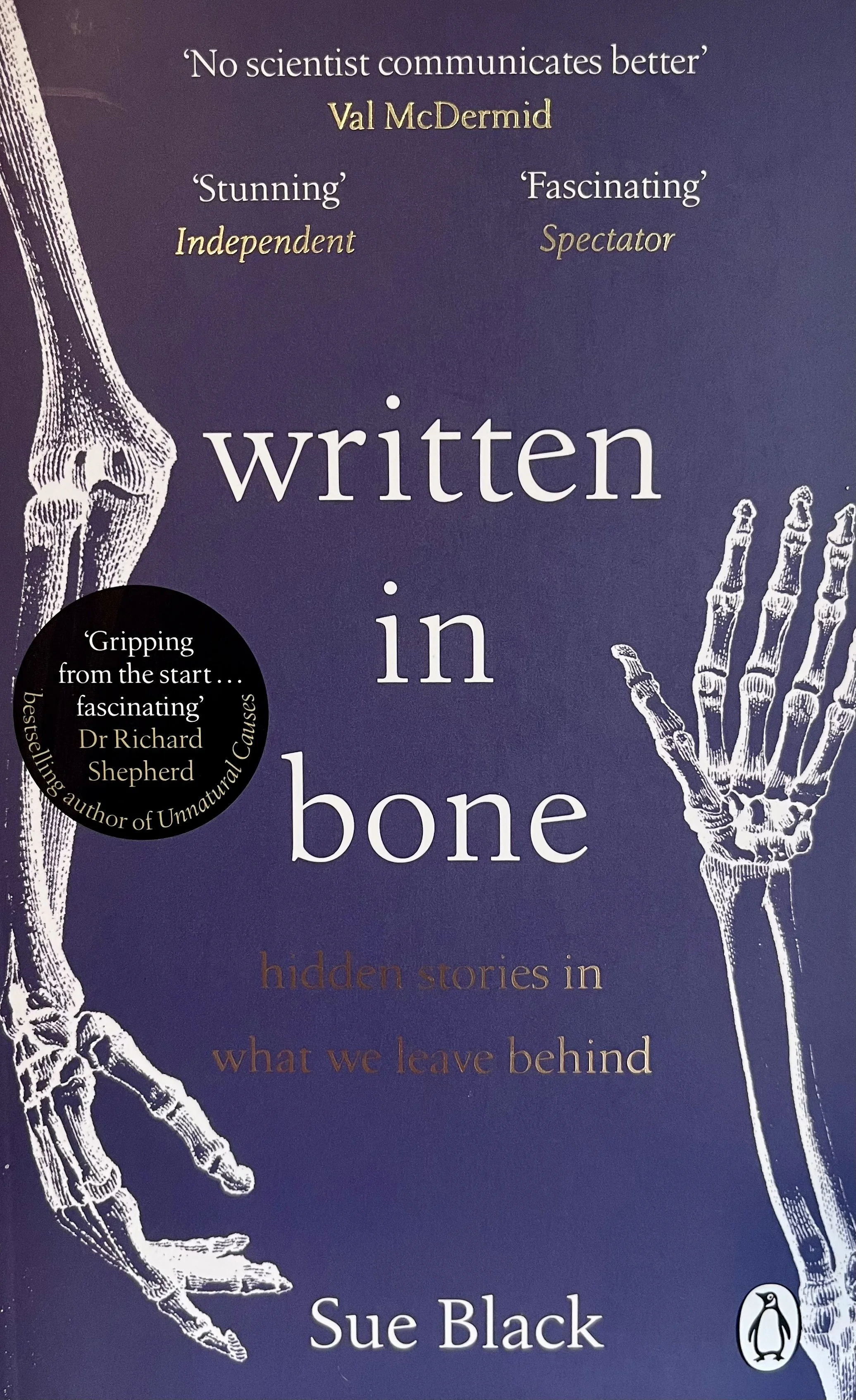Written in Bone.
Hidden Stories in What We Leave Behind.
Black, S. (2020). Written in Bone: Hidden Stories in What We Leave Behind [Cover image].
Continuing the momentum of my groundwork and reading (or listening in this case) for my research paper, I have recently finished the audiobook Written in Bone: Hidden Stories in What We Leave Behind by Dame Sue Black, a Scottish forensic anthropologist, anatomist and academic. I had originally picked up a physical copy of this book when I was in London back in March, at the same time I bought Unwell Women by Elinor Cleghorn, which I am currently reading.
After listening to the audiobook of The Lost Girls of Autism by Gina Rippon, I thought I would try the audio version of Written in Bone. As a slight side note, I have noticed that listening to audiobooks allows me to understand and digest these texts in an easier, although slightly different way. Having lived a life of trying to find workarounds and “hacks” for my dyslexia, I have sometimes struggled with reading, whether getting frustrated and caught up in my own head about it, or having to reread the same line because I have lost my place halfway through. I have found that audiobooks let me enjoy the arc of the book and follow the storyline or information being shared by the author without those frustrations. At the same time, having a physical copy alongside the audio version allows me to return to specific sections that connect with my research. This will no doubt help later when I come to writing the next draft of my paper and need to extract references.
As described on the back of Written in Bone, “our bones are the silent witnesses to the lives we lead. Our stories are marbled into their marrow.” Working from our skull to our toes, Black recounts case after case “with intimate sensitivity and compassion, the stories hidden in what we leave behind.”
I was drawn to this book in the little Waterstones at St Pancras Station because of the parallels Black seemed to draw between the messages and secrets held within our bodies and those I had been considering in trees, plants and landscapes. As I made my way through the book those parallels became even clearer, most notably in her discussion of Harris lines. Harris lines, also known as growth arrest lines, are markings that can appear on our bones when stress, illness or another adverse event causes growth to pause. They are visible on an x-ray as dense horizontal lines and can be used to study past disturbances and how different factors affect growth within a population.
This reminded me strongly of how trees form rings throughout their lifetime. By analysing tree rings, we can identify periods of drought, disease or other events and see where growth was slowed. This mirroring of growth in both the human body and the natural world feels very close to what I am trying to explore in my ink paintings, where marks and layers hold traces of memory, disruption and change.
Another particularly striking aspect of the book, viewed through the lens of landscapes and the body, was how our bones can also record the places we have lived. For example, Black recounted a case where the body of a woman was found in Scotland. At first, she could not be identified, although there was a suspicion she may have been of Asian descent, possibly from Indonesia, Thailand or Malaysia. However, signs in her physical makeup suggested she had been living close to where her body was discovered. It later emerged that she had moved from Thailand to Scotland, married, and had two children there. It is fascinating to consider that as much as we leave an impression on a landscape, it can leave one on us in return, often without us realising it. It reminded me of how I approach landscapes in my work, not only as places we inhabit but also as places that imprint themselves on us, shaping memory and belonging.
Our bodies hold a silent record of everything we go through in life. Even the pattern of our freckles is completely unique to us, just like our fingerprints. From scars to moles to the marks on our bones, every detail can be read as part of the story of the lives we have lived. Just as landscapes bear their own scars and rhythms, our bodies do the same, both holding stories that often remain hidden until closely read. It is this silent dialogue between body and landscape that continues to shape the direction of my research and practice.
